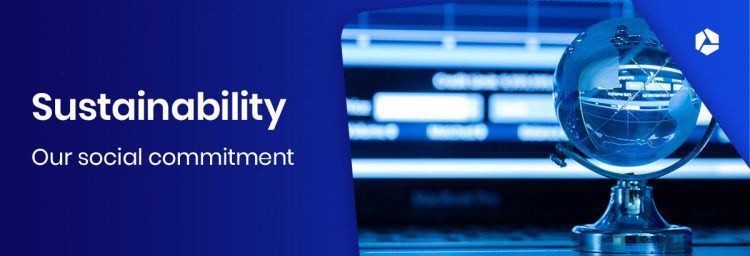Ever faster deliveries… do customers really want them?

 Web stores compete among each other, promising the fastest delivery – a trend eagerly met by logistics companies. But is the financial and ecological cost of that fast delivery really justified? And can customers not just wait for one more day?
Web stores compete among each other, promising the fastest delivery – a trend eagerly met by logistics companies. But is the financial and ecological cost of that fast delivery really justified? And can customers not just wait for one more day?
Shopping with your tablet or smartphone from your sofa, or strolling through the high street: both have their pros and cons, as well as their fans. In a brick and mortar store, you can see the products with your own eyes, touch, hear, smell or taste them. In a web shop, on the other hand, you can compare prices and features for different brands before making a purchase. Web shops are quite conscious of the enormous advantage that traditional businesses have when selling physical goods: they offer instant gratification. The customer can take the object of their desire home right away, while a purchase online requires several days of patience before the postman finally rings the doorbell.
Most e-commerce businesses therefore go to great lengths to seduce customers with the promise of a speedy delivery. And that delivery speed has indeed become much higher lately. While customers had to wait for approximately four days for a package to arrive before, several large web shops now sport the slogan “Order by 10 p.m. for next-day delivery to home”. If you pay a surcharge, you can even get same-day delivery in some cases.
Logistics companies streamline their offer to be able to comply with these high delivery speeds. bpost, for instance, have announced last week that they will also deliver packages on Saturday. Web store Coolblue takes this even further and will also have packages delivered on Sunday with the support of PostNL – an evolution that will undoubtedly be reproduced by bpost.
Alternative ways to deliver parcels are legion. Picking up your package in e.g. a Kiala Point relieves you of the obligation to sit around at home waiting for the mailman to come. bpost has installed special parcel distributing machines, for instance at Antwerp Central Station. And in the US, e-commerce mogul Amazon even plans to deliver parcels by drone (a small crewless aircrafts).
Those express deliveries do cost loads of money, however. Is that financially feasible in the long run? On top of that, we have not even touched on the subject of return costs for goods. Various large web stores – mostly clothing and shoe sellers – attract customers with free return shipping if they do not like what they ordered, because virtual stores obviously do not allow you to try on the stuff first.
Besides financial costs, there is also the ecological footprint. Express deliveries have a much bigger ecological impact because they have to be delivered separately. Grouped shipping, on the other hand, is much more economical, because one single courier or lorry can transport more packages at the same time; grouping packages does entail a longer delivery time though.
Is that express delivery worth the effort? And is it really something the customer wants? One wonders if the promise of same-day delivery is the decisive argument that will compel a customer to place his or her online order. Recent figures from the US show that, this year, 100 million dollars’ worth of goods will be delivered on the same day as they were ordered in 20 American cities. Customers, however, are not willing to pay for this express delivery. What is more, 92% of customers consulted during the survey state that they would be willing to wait for four days or even longer for their package to arrive.
For this reason, in Belgium, with the support of 13 companies, the Flemish Institute of Logistics is looking for a way to optimise Flemish e-commerce in a durable manner. The E-green project will start with an extensive consumer survey, to find out if Internet users are open to other methods for the delivery of their e-orders. Based on the results of that survey, best practices and a simulation model will then be developed, which will allow companies to work out costs and environmental impact of new delivery methods in a simple manner. The results will be presented in 2016.
It is trendy to take your time… Will our packages soon follow suit?


